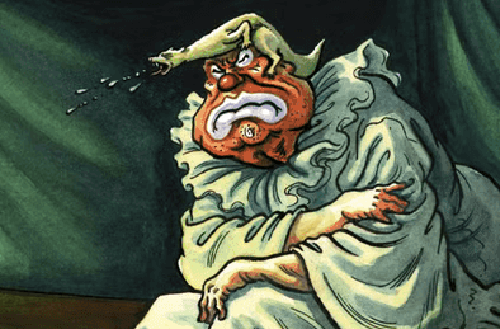Through the Past Cartoonly
Skip to commentsHarold and the Purple Crayon, 1960s Popeye cartoons, 1972 Sergio Aragonés poster, Little Orphan Annie and Harold Gray, 2024 San Diego Comic-Con book.
Crockett Johnson and Harold and The Purple Crayon
Harold is the sole visible creator in his universe. The pages he inhabits are plain white expanses until he fills them: with simple objects like a half-moon, a window frame and a sailboat; with more elaborate compositions like a high-rise cityscape, an apple tree guarded by a dragon and a seaside picnic featuring a moose, a porcupine and nine kinds of pie.

Harold first appeared in 1955 and has been a familiar presence on bookshelves ever since.
A. O. Scott for The New York Times review/appreciates Crockett Johnson and his Harold books.
Or here >thanks Kevin Siers< is a gift article.
**********
History of the Infamous 1960’s ‘Popeye’ TV Cartoon Series
Despite all of Popeye’s success in the print medium, his fame skyrocketed when Fleischer Studios used his image in a series of black & white theatrical cartoons. These became both a critical and financial success for their distributor, Paramount Pictures. Fleischer Studios began the series in 1933 and Famous Studios resumed control in 1942. By late 1943, the sailor’s films were being produced in full color. When the theatrical series ended in 1957, two hundred and thirty- four cartoons had been completed. Popeye still holds the record for starring in the longest running animated short series originally seen in theaters.
In September of 1956, these same cartoons debuted on the small screen and were a smashing success!

In 1959, King Features Syndicate, who owned the rights to the characters but not to the theatrical cartoons, wanted to cash in on this Popeye mania. They decided to crank out new Popeye episodes, which they would syndicate. Al Brodax became executive producer of these color cartoons. His goal was to have two hundred and ten episodes (eventually totaling two hundred and twenty) released as quickly as possible.
Popeye historian Fred Garndinetti for ReMIND Magazine reviews the 1960s Popeye cartoons from six different studios (Larry Harmon, William Snyder/Gene Deitch, John Halas & Joy Batchelor, Gerald Ray, and Jack Kinney).
Further reading: Popeye afficionado Joseph Nebus reviews the Jack Kinney Popeye cartoons individually.
**********
Sergio Aragonés – 1972 New York Comic Art Convention Poster Original Art

A doubly incredible piece. There is the wealth of detail we have come to love from this artist … Aragonés provided an incredible number of characters in attendance, with many hidden guest appearances by both real people (the EC greats sitting at the table at the very top) and famous characters (Alfred E. Neuman, Nancy, Henry, and most of the top superheroes just to name a few)!
Heritage Auctions will be offering the original art to Sergio Aragonés 1972 New York Comic Con poster.



**********
The 2024 San Diego Comic-Con International Souvenir Book (pdf)
From one side of the country 52 years ago to the other side of the country last month.

The 2024 San Diego Comic-Con Souvenir Book is available in a Portable Document Format.
Highlights (for me) include comics historian Richard Marschall on 100 years of Little Orphan Annie and fellow conservative Harold Gray, and comix publisher Denis Kitchen celebrating Harvey Kurtzman on the centennial of his birth. Also 132 pages of comic con and comic book history, and awards, and obituaries, and…

**********
Speaking of Little Orphan Annie…

Gray’s weird art was the perfect complement to his stories. Viewed in a vacuum, his linework might seem crude but his drawings were exactly what the art form called for.
His political views sometimes bordered on loony, but that only contributed to the powerful noir feel of his strip, and the ominous tone that pervaded many of his stories.
David Apatoff at Illustration Art has a brief appreciation of Harold Gray.


Comments 5
Comments are closed.